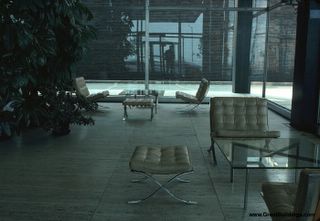
A brighter cleaner world
Thelonious Monk, Criss Cross.
"Compositions like Criss Cross...are pure, un-cluttered musical emanations," Gunther Schuller wrote in 1958. "It is not a "song", a term so many jazz musicians apply to all the music they work with, it is not a "tune"--it is a composition for instruments."
Schuller makes "Criss Cross" sound like a knotty, cerebral chore, but it's really a brilliantly constructed chutes-and-ladders game, in which Monk conscripts rhythm to work as melody. So many twists: Monk, in his four-bar intro, offers a rising melodic pattern that is answered later by a downward slide; the strange six-bar bridge (first appearance at 0:25), that forces the players to jump each time it ends; the way Monk, in his later solo, starts assembling the pieces of the original theme before the band resumes it.
The first solo goes to vibraphonist Milt Jackson (who received co-billing on some early releases). Jackson, who would soon co-found the Modern Jazz Quartet, was Lionel Hampton's only rival on the vibes--a wonderfully subtle, moody player. After him, Sahib Shihab offers a nice, conventional (only in comparison to Monk's brilliant oddities) meditation on alto sax. Al McKibbon's jaunty bass and Art Blakey's drumming make it all swing.
Recorded on July 23, 1951, in WOR Studios, New York. On The Genius of Modern Music, Volume Two.
Criss-Cross on paper.

The cold dawn of the glass houses. Top image: lobby of Ludwig Mies van der Rohe's Lake Shore Drive apartments in Chicago, completed in 1951. The reign of the steel-and-glass boxes, now blighting cities worldwide, begins here.
No comments:
Post a Comment